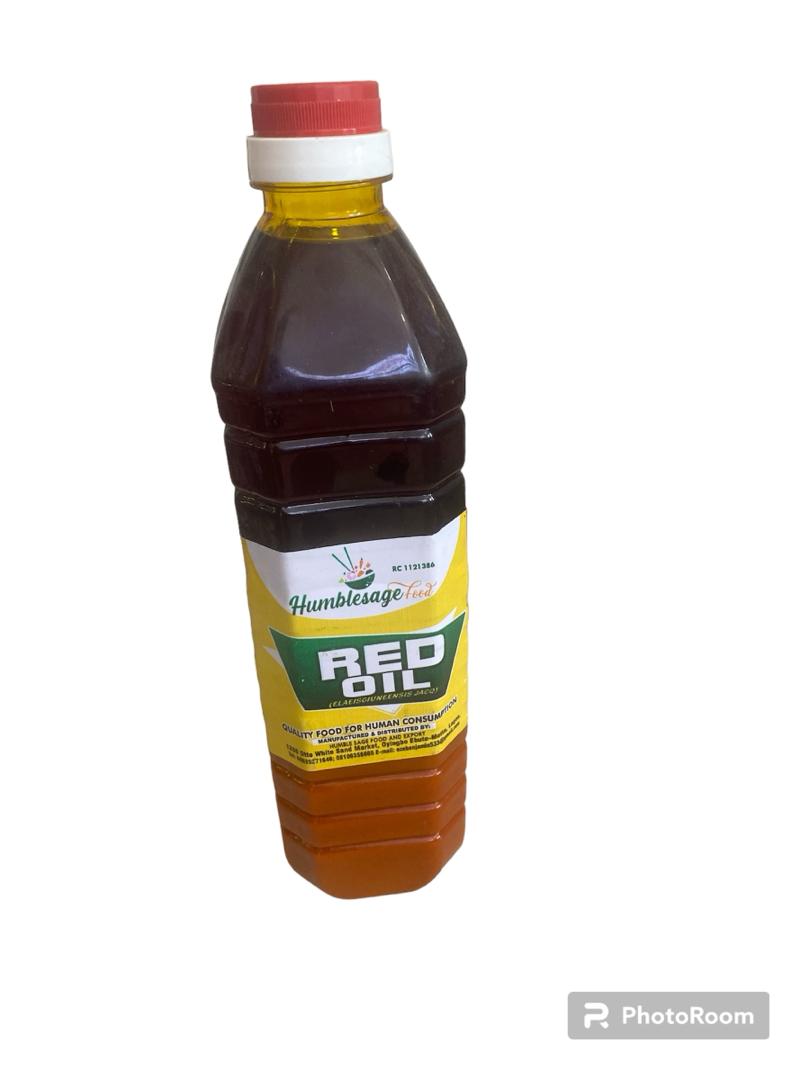Sale!
Palm Oil
₦4,000.00 – ₦20,000.00
Palm oil is a versatile vegetable oil derived from the fruit of oil palms, mainly the African oil palm (Elaeis guineensis). It’s widely used in food, cosmetics, cleaning products, and as biofuel. Known for its high vitamin E and beta-carotene content, palm oil is a nutrient-rich cooking oil with a long shelf life when stored properly.
Description
Palm oil is a widely used edible vegetable oil derived from the fruit of oil palms. The primary sources of palm oil are the African oil palm (Elaeis guineensis) and, to a lesser extent, the American oil palm (Elaeis oleifera). It is a highly versatile oil used in food products, cosmetics, cleaning agents, and as biofuel.
Botanical Description
- Scientific Name: Elaeis guineensis (African oil palm), Elaeis oleifera (American oil palm)
- Family: Arecaceae
- Plant Description:
- Type: Perennial tropical tree.
- Height: Can grow up to 20-30 meters tall.
- Leaves: Pinnate leaves that can reach lengths of 3-5 meters.
- Fruit: The oil palm produces clusters of fruit, each about the size of a large plum, containing a fleshy mesocarp and a central seed (kernel).
Types of Palm Oil
- Crude Palm Oil (CPO): Extracted from the mesocarp (fleshy part) of the oil palm fruit. It is naturally reddish in color due to a high beta-carotene content.
- Palm Kernel Oil (PKO): Extracted from the kernel or seed of the oil palm fruit. It is lighter in color and has different fatty acid composition compared to crude palm oil.
- Refined Palm Oil: CPO that has been refined, bleached, and deodorized (RBD) to remove impurities and reduce color and odor.
Physical Characteristics
- Color: Crude palm oil is reddish-orange due to high levels of beta-carotene. Refined palm oil is pale yellow.
- Texture: Semi-solid at room temperature but melts at around 24°C (75°F).
- Aroma and Flavor: Crude palm oil has a distinct, strong flavor and aroma. Refined palm oil is neutral in taste and smell.
Nutritional Profile (per 100 grams of palm oil)
- Calories: Approximately 884 kcal
- Total Fat: 100 grams
- Saturated Fat: 49 grams
- Monounsaturated Fat: 37 grams
- Polyunsaturated Fat: 9 grams
- Vitamins: Rich in vitamin E (tocopherols and tocotrienols) and beta-carotene (pro-vitamin A).
Health Benefits and Concerns
Benefits
- Energy Source: High caloric content makes it a significant energy source.
- Nutrient-Rich: Contains vitamin E and beta-carotene, important antioxidants.
- Stable Cooking Oil: High smoke point makes it suitable for frying and other high-temperature cooking methods.
Concerns
- High Saturated Fat Content: Linked to increased risk of heart disease if consumed in excess.
- Processing Impacts: Refined palm oil may lose some beneficial nutrients during processing.
Culinary Uses
- Cooking Oil: Used for frying, baking, and as a base for margarine and shortening.
- Processed Foods: Found in a variety of processed foods such as cookies, snacks, and instant noodles.
- Traditional Dishes: Integral to many African, Southeast Asian, and Latin American dishes.
Industrial Uses
- Cosmetics: Used in soaps, shampoos, and other personal care products due to its moisturizing properties.
- Cleaning Agents: Found in detergents and household cleaners.
- Biofuel: Used as a feedstock for biodiesel production.
Production Process
- Cultivation: Oil palms are cultivated in tropical climates, primarily in countries like Indonesia, Malaysia, Nigeria, and Thailand.
- Harvesting: Fresh fruit bunches are harvested from the oil palm trees.
- Processing:
- Sterilization: The fruit bunches are steamed to loosen the fruits and inactivate enzymes.
- Threshing: Fruits are separated from the bunches.
- Extraction: Fruits are pressed to extract the crude palm oil from the mesocarp. Kernels are separated and pressed to extract palm kernel oil.
- Refining: Crude palm oil may be refined, bleached, and deodorized to produce RBD palm oil.
Environmental and Social Impact
Environmental Concerns
- Deforestation: Large-scale oil palm plantations contribute to deforestation and habitat loss, particularly in Indonesia and Malaysia.
- Biodiversity Loss: Expansion of palm oil plantations threatens endangered species such as orangutans, tigers, and rhinoceroses.
- Greenhouse Gas Emissions: Deforestation and peatland drainage for palm oil cultivation release significant amounts of CO2.
Social Concerns
- Land Rights: Issues related to land grabbing and displacement of indigenous communities.
- Labor Practices: Concerns about labor conditions, including child labor and worker exploitation on some plantations.
Sustainability Efforts
- Certification: Organizations like the Roundtable on Sustainable Palm Oil (RSPO) promote sustainable palm oil production through certification.
- Traceability: Efforts to improve supply chain traceability to ensure palm oil is sourced responsibly.
- Corporate Commitments: Many companies are committing to sourcing 100% sustainable palm oil.
Storage and Shelf Life
- Storage Conditions: Store in a cool, dark place in an airtight container.
- Shelf Life: Refined palm oil can last up to a year, while crude palm oil has a shorter shelf life due to its higher carotene content.



Reviews
There are no reviews yet.